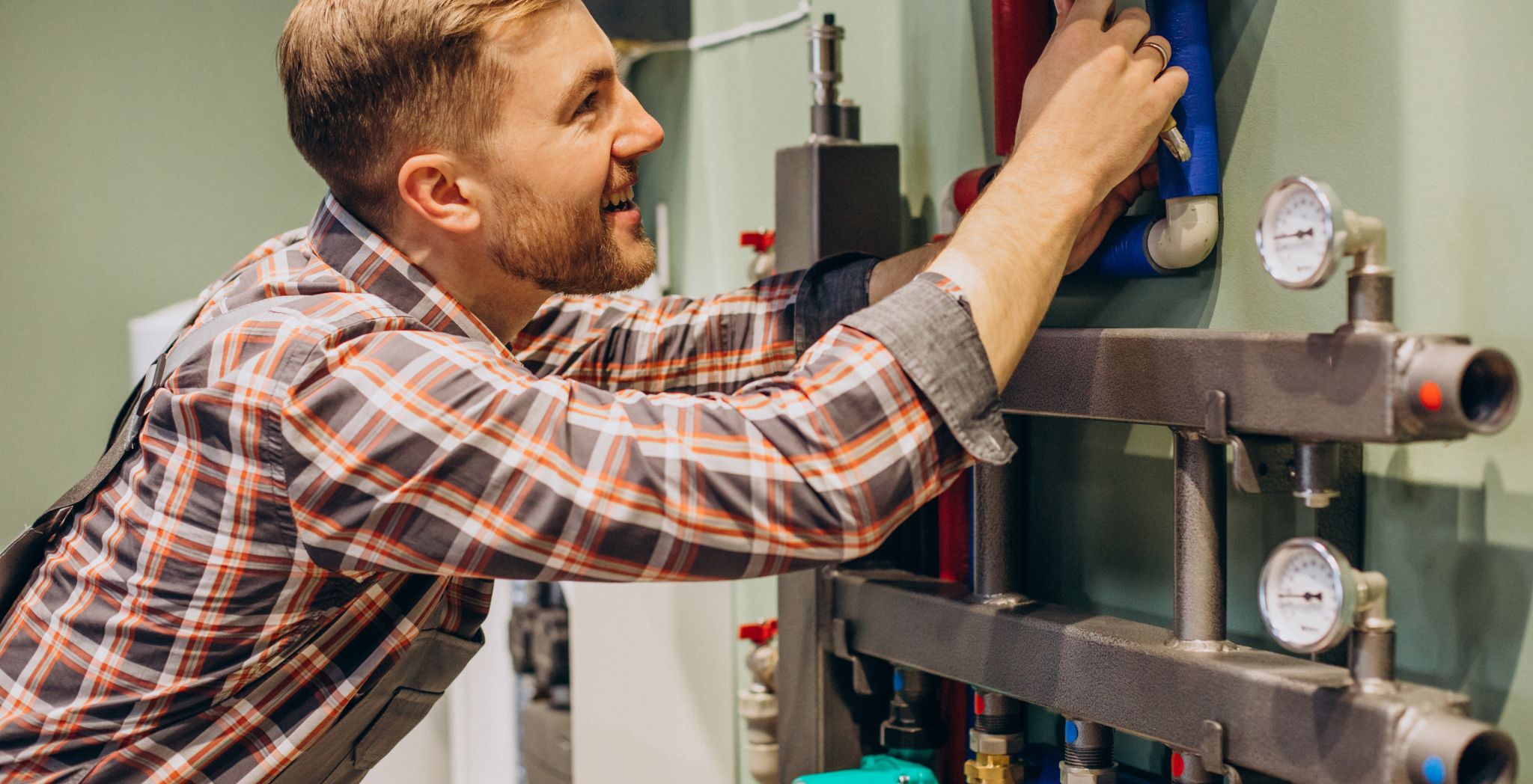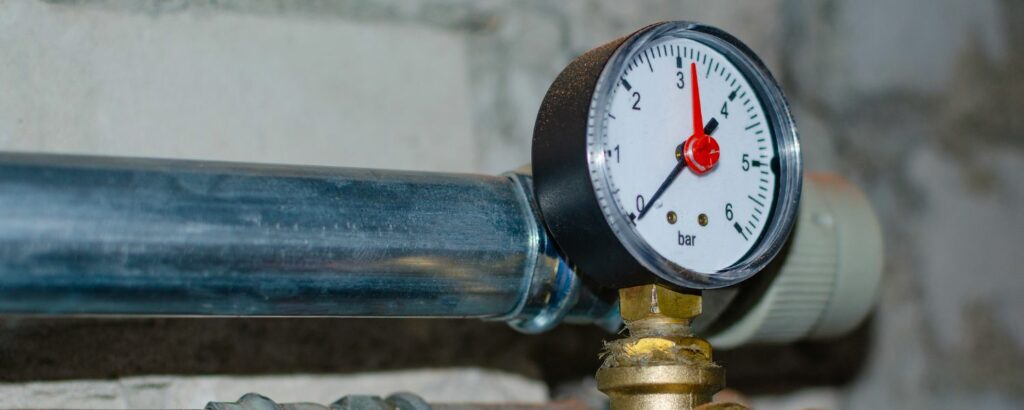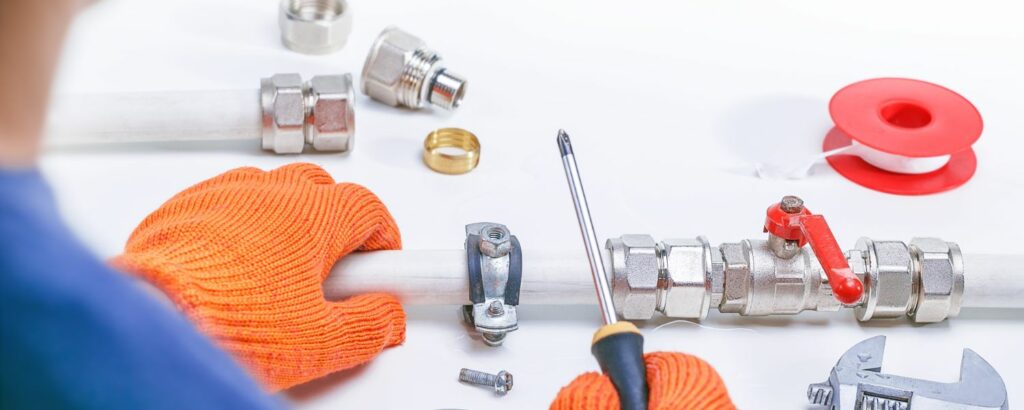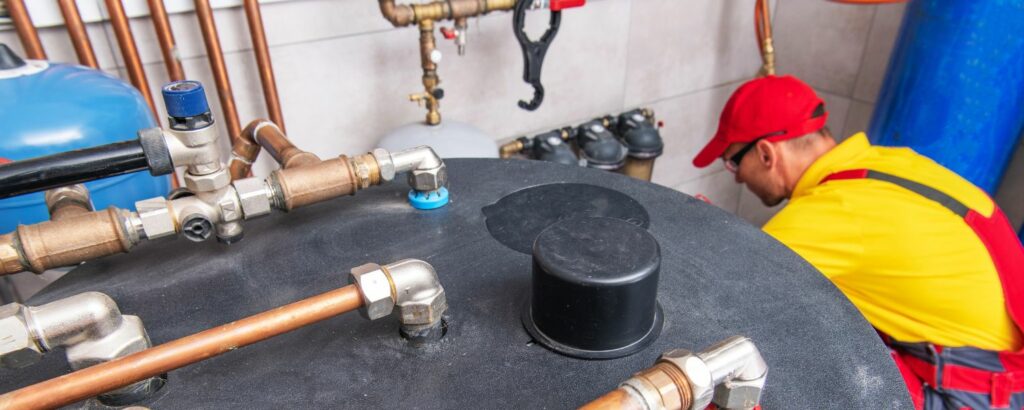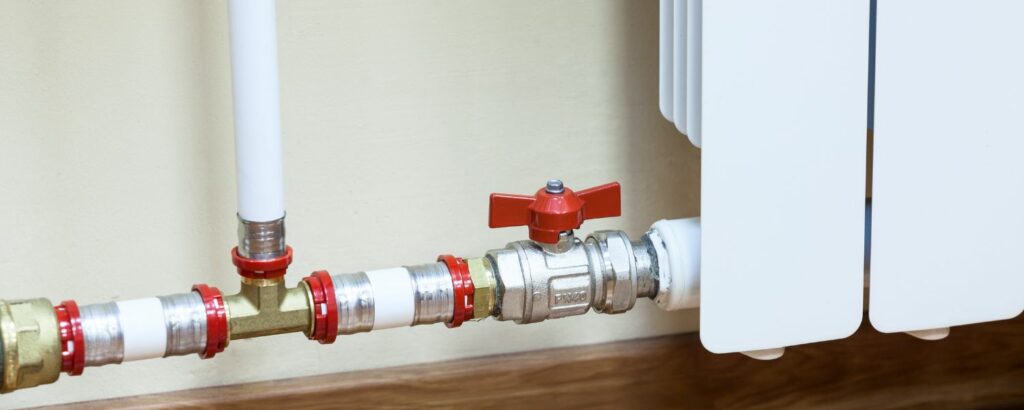Replacing a water heater is a common home improvement project that many homeowners face at some point to replace a water heater.
Whether your current unit is malfunctioning, inefficient, or simply too old, understanding the process and time involved in replacing a water heater is essential.
Knowing how long it takes to replace a water heater can help you plan accordingly, minimize disruption, and ensure that you get back to your routine with hot water as quickly as possible.
In this comprehensive guide, we’ll break down the entire process of replacing a water heater, from the initial steps to completion. We’ll explore what you need to do first, the average time it takes to replace a water heater, factors that can extend this time, and the benefits of professional installation. We’ll also compare the installation times of different types of water heaters, such as electric and tankless models, and discuss when you should consider replacing your water heater.
1. What Do You Do First?
Before you can replace your water heater, there are several important steps you need to take to prepare for the installation. These initial steps are crucial to ensuring that the process goes smoothly and that you choose the right replacement unit for your needs.
A. Assess Your Current Water Heater
The first step is to assess the condition of your current water heater. If your water heater is not producing hot water, making strange noises, or leaking, it may be time for a replacement. For issues that aren’t severe, consider water heater repair. Additionally, if your water heater is more than 10-15 years old, it’s likely nearing the end of its lifespan.
B. Determine the Type of Water Heater You Need
Next, you’ll need to determine what type of water heater you want to install. There are several options available, including traditional tank water heaters (electric or gas) and tankless water heaters. Your choice will depend on factors such as your household’s hot water needs, energy efficiency preferences, and budget.
C. Choose the Right Size
If you’re opting for a traditional tank water heater, you’ll need to choose the right size for your household. A common size for many homes is the 40-gallon hot water heater, which is suitable for a family of four. However, larger families may need a larger tank, while smaller households can opt for a smaller unit.
D. Check Local Building Codes
Before proceeding, check your local building codes and regulations. Some areas have specific requirements for water heater installation, such as safety measures, venting, and energy efficiency standards. Ensuring compliance with these codes is essential to avoid potential issues later.
E. Prepare the Installation Site
Finally, prepare the installation site by clearing the area around your current water heater. Ensure that there is enough space for the new unit and that the area is clean and free of obstacles. If necessary, shut off the water supply and power to the existing water heater before starting the replacement.
2. How Long Does It Take?
The time it takes to replace a water heater can vary depending on several factors, including the type of water heater, the complexity of the installation, and whether you’re doing it yourself or hiring a professional. On average, how long does it take to replace a water heater?
A. Average Replacement Time
For most standard installations, replacing a water heater typically takes between 2 to 4 hours. This timeframe includes the time needed to remove the old water heater, install the new one, and test it to ensure it’s working correctly. However, this estimate can vary based on the specific circumstances of your installation.
B. Professional vs. DIY Installation
If you’re hiring a professional plumber or technician to replace your water heater, the process is generally quicker and more efficient. A skilled professional can usually complete the installation within the 2 to 4-hour window. On the other hand, if you’re attempting a DIY installation, it may take longer, especially if you’re not familiar with plumbing or electrical work.
3. What Can Make It Take Longer?
While the average replacement time is relatively short, several factors, including the need for emergency water heater repair, can extend the time it takes to replace a water heater. Understanding these potential delays can help you better prepare for the installation.
A. Complexity of the Installation
If the installation site requires additional work, such as relocating the water heater, upgrading electrical or gas lines, or installing new venting, the process can take longer. These tasks add to the complexity of the installation and may require more time to complete.
B. Unexpected Issues
During the replacement process, you may encounter unexpected issues, such as corroded pipes, leaks, or problems with the water heater connections. Addressing these issues can add time to the installation, as they may require additional repairs or parts.
C. Permits and Inspections
In some cases, local building codes may require permits and inspections for water heater installation. Obtaining permits and scheduling inspections can add time to the overall process, especially if there are delays in approval.
D. Availability of Parts
If your water heater requires specific parts or components that are not readily available, it may take longer to complete the installation. Ordering and waiting for parts to arrive can delay the process, particularly if you’re working with a less common or specialized model.
E. Drainage Time
One aspect that many homeowners overlook is the time it takes to drain the old water heater. How long does it take to drain a water heater? This can vary depending on the size of the tank and the water pressure in your home. Draining a large tank can take anywhere from 30 minutes to an hour, depending on these factors.
4. Is It Time for a New Water Heater?
Deciding whether it’s time to replace your water heater is an important decision. There are several signs that indicate it may be time for a new unit, and understanding these signs can help you avoid unexpected breakdowns and ensure you have reliable hot water.
A. Age of the Water Heater
One of the most significant indicators that it’s time for a new water heater is its age. How long does a water heater last? On average, traditional tank water heaters last between 10 to 15 years, while tankless water heaters can last up to 20 years or more. If your water heater is approaching or exceeding this age range, it’s likely time to start considering a replacement.
B. Decreased Efficiency
As water heaters age, they often become less efficient, leading to higher energy bills and longer heating times. If you’ve noticed a significant increase in your energy costs or if your water heater is struggling to provide consistent hot water, it may be time to replace a water heater. Consider professional water heater service to ensure a smooth installation of a more energy-efficient model.
C. Frequent Repairs
If your water heater requires frequent repairs, it’s a sign that it’s nearing the end of its lifespan. Constantly fixing leaks, replacing components, or dealing with other issues can become costly over time. In many cases, it makes more sense to invest in a new water heater rather than continuing to repair an old, unreliable unit.
D. Rust and Corrosion
If you notice rust or corrosion on your water heater or in your hot water, it’s a sign of significant internal damage. Rusty water can indicate that the tank is deteriorating, and once rust starts to appear, it’s usually only a matter of time before the unit fails completely.
E. Inadequate Hot Water Supply
If your water heater is no longer providing enough hot water to meet your household’s needs, it may be time for a replacement. This is especially true if your family has grown or your hot water usage has increased since the original installation.
5. What Is the Duration for Water Heater Installation?
The duration of water heater installation can vary based on the type of unit being installed, the installation site, and whether you’re hiring a professional or doing it yourself. Below, we’ll explore the typical installation times for different types of water heaters.
A. Traditional Tank Water Heaters
For a standard electric or gas tank water heater, the installation time is generally between 2 to 4 hours. This includes the time needed to remove the old unit, set up the new one, connect it to the water and power supply, and test the system.
How long does it take to replace an electric water heater? The installation time for an electric water heater is typically on the shorter end of this range, as electric units are generally easier to install compared to gas models.
How long does it take to replace a gas water heater? Replacing a gas water heater may take a bit longer due to the additional steps involved in connecting the gas line and ensuring proper venting.
B. Tankless Water Heaters
Installing a tankless water heater can take longer than a traditional tank unit, especially if this is the first time a tankless system is being installed in your home. The installation time for a tankless water heater can range from 4 to 8 hours or more, depending on the complexity of the setup.
How long does it take to replace a tankless water heater? If you’re simply replacing an existing tankless unit with a new one, the installation time may be shorter, closer to 3 to 5 hours. However, if you’re upgrading from a tank to a tankless system, additional work such as rerouting pipes and electrical connections can extend the installation time.
6. Electric Water Heater Tank vs. Tankless Water Heaters
The type of water heater you choose can significantly impact the installation time. Let’s compare the installation times for electric water heater tanks and tankless water heaters.
A. Electric Water Heater Tank
Electric water heater tanks are relatively straightforward to install, particularly if you’re replacing an existing electric unit. The installation process typically involves disconnecting the old water heater, draining the tank, and then connecting the new unit to the existing water and electrical lines.
For a 40-gallon hot water heater, which is a common size for many households, the installation time is usually around 2 to 3 hours. This makes electric water heater tanks one of the quicker options for replacement.
B. Tankless Water Heaters
Tankless water heaters, while more energy-efficient and space-saving, require a more complex installation process. Unlike tank units, which store hot water for immediate use, tankless systems heat water on demand. This requires precise connections to both the water supply and the power source (which may be gas or electric).
The installation of a tankless water heater can take anywhere from 4 to 8 hours, depending on factors such as the layout of your home, the location of the unit, and whether any additional infrastructure (such as new gas lines or electrical upgrades) is needed. While the installation time is longer, the benefits of a tankless system, including endless hot water and reduced energy costs, often outweigh the inconvenience of a longer installation.
7. Factors That Can Affect the Installation Time
Several factors can influence how long it takes to replace a water heater. Understanding these factors can help you better estimate the time required and plan for any potential delays.
A. Type of Water Heater
As discussed earlier, the type of water heater (electric, gas, tankless) plays a significant role in determining the installation time. Electric models are generally quicker to install, while gas and tankless models may require more time due to additional connections and safety considerations.
B. Location of the Water Heater
The location of the water heater in your home can also affect the installation time. If the unit is located in a hard-to-reach area, such as a cramped utility closet or basement, it may take longer to remove the old unit and install the new one. Additionally, if the water heater needs to be relocated to a different part of the home, this can add significant time to the installation process.
C. Condition of Existing Connections
If the existing plumbing, gas, or electrical connections are in good condition, the installation process will be quicker. However, if there are issues with these connections, such as leaks, corrosion, or outdated wiring, additional repairs or upgrades may be necessary before the new water heater can be installed. These repairs can add time to the overall process.
D. Permits and Inspections
As mentioned earlier, some areas require permits and inspections for water heater installations. The time it takes to obtain these permits and schedule inspections can vary depending on your location and the efficiency of your local building department. Be sure to factor this into your installation timeline.
E. Drainage and Disposal of Old Unit
Draining the old water heater and disposing of it can add time to the installation process. How long does it take to drain a water heater? This can vary depending on the size of the tank and your home’s water pressure. Additionally, if the old unit needs to be transported to a disposal site, this can further extend the time required.
8. The Benefits of a Professional Installation
While it may be tempting to save money by attempting a DIY water heater installation, there are several benefits to hiring a professional for the job. These benefits can often outweigh the cost of professional installation and provide peace of mind knowing that the job is done correctly.
A. Expertise and Experience
Professional plumbers and technicians have the expertise and experience needed to install water heaters safely and efficiently. They are familiar with local building codes, safety regulations, and the best practices for installation, ensuring that your new water heater is installed correctly.
B. Time Savings
As we’ve discussed, professional installation is generally quicker than a DIY approach. Professionals can complete the installation in a shorter amount of time, minimizing disruption to your home and getting your hot water back up and running as quickly as possible.
C. Warranty Protection
Many water heater manufacturers require professional installation for their warranties to remain valid. If you install the unit yourself and something goes wrong, you may void the warranty, leaving you responsible for any repairs or replacements. Hiring a professional ensures that your warranty remains intact.
D. Safety
Installing a water heater involves working with water, electricity, and sometimes gas. These elements can be dangerous if not handled properly. Professional installers are trained to manage these risks, ensuring that the installation is done safely and that your home is protected from potential hazards.
E. Proper Sizing and Placement
A professional installer can help you choose the right size and type of water heater for your home. They can also ensure that the unit is placed in the optimal location for efficiency and ease of maintenance. This can help prevent issues such as inadequate hot water supply or energy inefficiency.
9. When Should You Replace Your Water Heater?
Knowing when to replace your water heater is crucial to avoiding unexpected breakdowns and ensuring that you have a reliable supply of hot water. Several signs can indicate that it’s time for a replacement.
A. Age of the Unit
As mentioned earlier, the age of your water heater is one of the most important factors to consider. How long does a water heating last? If your unit is more than 10-15 years old, it’s likely nearing the end of its useful life and should be replaced before it fails.
B. Increased Energy Bills
If you’ve noticed a significant increase in your energy bills, it could be due to an inefficient water heater. As water heaters age, they often become less efficient, requiring more energy to heat the same amount of water. Replacing an old, inefficient unit with a new, energy-efficient model can help lower your energy costs.
C. Inconsistent Water Temperature
If your water heater is no longer providing consistent hot water, it may be time for a replacement. This can be caused by a variety of issues, including sediment buildup in the tank, a failing heating element, or a malfunctioning thermostat.
D. Leaks and Water Damage
If you notice water pooling around your water heater or signs of water damage near the unit, it’s a sign that the tank may be leaking. Leaks can lead to significant water damage in your home and should be addressed immediately. In most cases, a leaking tank will need to be replaced.
E. Rusty Water
If you notice rust or discoloration in your hot water, it could be a sign of corrosion inside the water heater. Rusty water is a serious issue that can indicate the tank is deteriorating from the inside. Once rust begins to form, it’s usually only a matter of time before the tank fails, so replacement is recommended.
Conclusion
Replacing a water heater is a significant home improvement project that requires careful planning and consideration.
Understanding how long it takes to replace a water heater and the factors that can affect the installation time can help you prepare for the process and ensure a smooth transition to a new unit.
Whether you’re replacing a 40-gallon hot water heater, an electric unit, a gas model, or upgrading to a tankless system, the time required will vary based on several factors, including the type of water heater, the complexity of the installation, and whether you’re hiring a professional.
While it may be tempting to attempt a DIY installation, there are several benefits to hiring a professional, including time savings, safety, and warranty protection.
Additionally, knowing when to replace your water heater is crucial to avoiding unexpected breakdowns and ensuring that you have a reliable supply of hot water.
In summary, replacing a water heater is a task that most homeowners will face at some point. By understanding the process, the time involved, and the benefits of professional installation, you can make informed decisions and ensure that your home remains comfortable and efficient.
Whether you’re dealing with an aging unit, increased energy bills, or inconsistent hot water, replacing your water heater can provide long-term benefits and peace of mind.
Life Mechanical provides expert assistance in replacing water heaters, ensuring a smooth and efficient process. Their skilled technicians handle everything from removing the old unit to installing the new one, minimizing downtime. With their expertise, you can trust that your water heater will be installed safely and correctly, ensuring reliable hot water.

